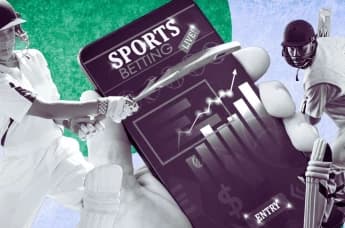Uncover the secrets of horse behavior in the parade ring and learn how to leverage these insights for smarter betting decisions, enhancing your chances of success on race day.
Horse racing is a sport full of variables, including track conditions and jockey strategies. However, one of the most commonly ignored aspects when evaluating a horse's odds is its behavior in the parade ring prior to the race. Experienced bettors and professional gamblers often closely observe how horses behave during this important pre-race moment, as they believe that body language, temperament, and energy levels can offer significant insights into their potential performance.
Can the behavior of a horse in the parade ring genuinely indicate a potential winner? While it is not a precise science, there are identifiable patterns that can assist bettors in making more educated choices. This article delves into the activities that occur in the parade ring, the important signs to observe, and how to utilize this information when placing bets.
What Is the Parade Ring?
The parade ring, commonly referred to as the paddock, is the designated area where horses are showcased prior to the race. It serves various functions: it allows trainers and jockeys to evaluate their horses, provides owners and spectators an up-close experience, and offers bettors a final opportunity to assess the condition of each horse.
Prior to the race, horses make their way into the parade ring with their handlers. This moment marks their first encounter with the crowd, the ambiance, and the overall race-day setting. Observing a horse's reaction in this environment can offer valuable insights into its mental and physical preparedness for the upcoming race.
The Significance of the Parade Ring for Bettors
Many professional bettors think that a horse’s behavior before the race can significantly indicate its performance on the track. Unlike historical data such as past performances, trainer statistics, or betting odds, the parade ring offers immediate insight into a horse’s condition just moments before the race begins.
A horse may seem exceptional based on its statistics, yet display signs of nervousness or agitation in the parade ring. In contrast, an outsider with higher odds might exude calmness, confidence, and seem physically prepared, indicating the potential to exceed expectations. These insights assist bettors in refining their selections beyond what is merely presented on the race card.
Important Pre-Race Behaviors to Observe
When evaluating horses in the parade ring, it's crucial to recognize both positive and negative signs. A relaxed yet alert stance is a strong indication of confidence. Horses that move fluidly and exhibit an interested, yet calm, demeanor are typically in the right frame of mind to perform successfully. Visible muscle definition and a shiny coat are indicators that a horse is in optimal physical condition, a vital aspect of race preparedness. Ears that are pricked forward generally signify attentiveness and concentration, while a horse showing controlled energy, like slight bouncing or prancing, may be demonstrating enthusiasm without exhibiting nervousness.
Negative indicators can be quite revealing. Excessive sweating, especially in the flanks and shoulders, might point to stress or discomfort. While some sweating is to be expected, an excessive amount just before a race could mean the horse is depleting important energy reserves. Signs of restlessness, agitation, or behaviors such as bucking, rearing, or not walking calmly can signal that the horse is overly anxious. On the other hand, a lethargic or disinterested horse that moves slowly in the parade ring may not be feeling well. When a horse's ears are pinned back, it often signals irritation or distress, indicating that it may not be in the proper mental state to compete successfully.
Approaches to Employing Parade Ring Insights for Betting
Observations in the parade ring should complement form analysis, odds evaluation, and track conditions to enhance betting choices. A horse that has consistently shown strong performance but is exhibiting unusual behavior in the parade ring—such as signs of anxiety or unease—may warrant further consideration. Conversely, an underdog that appears confident and relaxed might also deserve a second look, particularly for each-way wagers.
Recognizing trends in a horse's behavior and racing performance can be advantageous. If a horse often misbehaves in the parade ring and has disappointing results, it might struggle to cope with the pre-race environment. On the other hand, a horse that consistently appears focused in the parade ring and performs well should be remembered for upcoming races.
Observations from the parade ring are incredibly valuable for making last-minute betting decisions. Many bettors come to the track with a list of possible bets, but witnessing a horse's demeanor just prior to the race can either bolster their confidence in their choice or lead them to rethink their strategy.
Focusing on body language rather than market trends can be an effective strategy. Betting markets are influenced by numerous external factors, such as media buzz and public sentiment, whereas the parade ring provides clear, observable signs of a horse's condition. If a heavily favored horse appears anxious or fatigued, while an underdog seems alert and ready, it may present an opportunity to bet against the prevailing market trend.
Comprehending the Dangers of Depending on Parade Ring Analysis
Observations made in the parade ring can provide valuable insights, but they also carry certain risks. Subjectivity is a significant factor, as different bettors may interpret a horse's behavior in various ways. What one observer perceives as confidence, another may consider as excessive excitement. Additionally, some horses may naturally sweat or display lively behavior prior to a race yet still perform admirably, making it essential not to overreact to minor signals.
The limited time available for observation can present challenges. With just a few minutes to evaluate several horses, it can be difficult to get a comprehensive understanding. Additionally, external factors such as changes in weather, noise levels, and pre-race routines can unpredictably affect a horse's behavior.
To achieve the best outcomes, it's important to combine parade ring analysis with other betting considerations, including recent performance, trainer statistics, jockey expertise, and track conditions.
The parade ring is often overlooked as a valuable source of real-time betting insights. While factors such as odds, previous performances, and race-day reports hold significance, witnessing a horse's condition and demeanor just before a race is unparalleled.
For bettors who invest time in understanding the subtle behaviors of horses, observing them before the race can offer a competitive advantage. Recognizing a calm, well-conditioned shot or noticing a favorite that appears anxious can be the key to making a successful wager.
Although no method can guarantee accurate predictions for race outcomes, analyzing behavior in the parade ring provides an additional valuable resource for bettors. Those who are attentive and possess a keen eye for detail might find that the next winning horse is ready to be spotted in the paddock.
Horse racing is a sport full of variables, including track conditions and jockey strategies. However, one of the most commonly ignored aspects when evaluating a horse's odds is its behavior in the parade ring prior to the race. Experienced bettors and professional gamblers often closely observe how horses behave during this important pre-race moment, as they believe that body language, temperament, and energy levels can offer significant insights into their potential performance.
Can the behavior of a horse in the parade ring genuinely indicate a potential winner? While it is not a precise science, there are identifiable patterns that can assist bettors in making more educated choices. This article delves into the activities that occur in the parade ring, the important signs to observe, and how to utilize this information when placing bets.
What Is the Parade Ring?
The parade ring, commonly referred to as the paddock, is the designated area where horses are showcased prior to the race. It serves various functions: it allows trainers and jockeys to evaluate their horses, provides owners and spectators an up-close experience, and offers bettors a final opportunity to assess the condition of each horse.
Prior to the race, horses make their way into the parade ring with their handlers. This moment marks their first encounter with the crowd, the ambiance, and the overall race-day setting. Observing a horse's reaction in this environment can offer valuable insights into its mental and physical preparedness for the upcoming race.
The Significance of the Parade Ring for Bettors
Many professional bettors think that a horse’s behavior before the race can significantly indicate its performance on the track. Unlike historical data such as past performances, trainer statistics, or betting odds, the parade ring offers immediate insight into a horse’s condition just moments before the race begins.
A horse may seem exceptional based on its statistics, yet display signs of nervousness or agitation in the parade ring. In contrast, an outsider with higher odds might exude calmness, confidence, and seem physically prepared, indicating the potential to exceed expectations. These insights assist bettors in refining their selections beyond what is merely presented on the race card.
Important Pre-Race Behaviors to Observe
When evaluating horses in the parade ring, it's crucial to recognize both positive and negative signs. A relaxed yet alert stance is a strong indication of confidence. Horses that move fluidly and exhibit an interested, yet calm, demeanor are typically in the right frame of mind to perform successfully. Visible muscle definition and a shiny coat are indicators that a horse is in optimal physical condition, a vital aspect of race preparedness. Ears that are pricked forward generally signify attentiveness and concentration, while a horse showing controlled energy, like slight bouncing or prancing, may be demonstrating enthusiasm without exhibiting nervousness.
Negative indicators can be quite revealing. Excessive sweating, especially in the flanks and shoulders, might point to stress or discomfort. While some sweating is to be expected, an excessive amount just before a race could mean the horse is depleting important energy reserves. Signs of restlessness, agitation, or behaviors such as bucking, rearing, or not walking calmly can signal that the horse is overly anxious. On the other hand, a lethargic or disinterested horse that moves slowly in the parade ring may not be feeling well. When a horse's ears are pinned back, it often signals irritation or distress, indicating that it may not be in the proper mental state to compete successfully.
Approaches to Employing Parade Ring Insights for Betting
Observations in the parade ring should complement form analysis, odds evaluation, and track conditions to enhance betting choices. A horse that has consistently shown strong performance but is exhibiting unusual behavior in the parade ring—such as signs of anxiety or unease—may warrant further consideration. Conversely, an underdog that appears confident and relaxed might also deserve a second look, particularly for each-way wagers.
Recognizing trends in a horse's behavior and racing performance can be advantageous. If a horse often misbehaves in the parade ring and has disappointing results, it might struggle to cope with the pre-race environment. On the other hand, a horse that consistently appears focused in the parade ring and performs well should be remembered for upcoming races.
Observations from the parade ring are incredibly valuable for making last-minute betting decisions. Many bettors come to the track with a list of possible bets, but witnessing a horse's demeanor just prior to the race can either bolster their confidence in their choice or lead them to rethink their strategy.
Focusing on body language rather than market trends can be an effective strategy. Betting markets are influenced by numerous external factors, such as media buzz and public sentiment, whereas the parade ring provides clear, observable signs of a horse's condition. If a heavily favored horse appears anxious or fatigued, while an underdog seems alert and ready, it may present an opportunity to bet against the prevailing market trend.
Comprehending the Dangers of Depending on Parade Ring Analysis
Observations made in the parade ring can provide valuable insights, but they also carry certain risks. Subjectivity is a significant factor, as different bettors may interpret a horse's behavior in various ways. What one observer perceives as confidence, another may consider as excessive excitement. Additionally, some horses may naturally sweat or display lively behavior prior to a race yet still perform admirably, making it essential not to overreact to minor signals.
The limited time available for observation can present challenges. With just a few minutes to evaluate several horses, it can be difficult to get a comprehensive understanding. Additionally, external factors such as changes in weather, noise levels, and pre-race routines can unpredictably affect a horse's behavior.
To achieve the best outcomes, it's important to combine parade ring analysis with other betting considerations, including recent performance, trainer statistics, jockey expertise, and track conditions.
The parade ring is often overlooked as a valuable source of real-time betting insights. While factors such as odds, previous performances, and race-day reports hold significance, witnessing a horse's condition and demeanor just before a race is unparalleled.
For bettors who invest time in understanding the subtle behaviors of horses, observing them before the race can offer a competitive advantage. Recognizing a calm, well-conditioned shot or noticing a favorite that appears anxious can be the key to making a successful wager.
Although no method can guarantee accurate predictions for race outcomes, analyzing behavior in the parade ring provides an additional valuable resource for bettors. Those who are attentive and possess a keen eye for detail might find that the next winning horse is ready to be spotted in the paddock.







